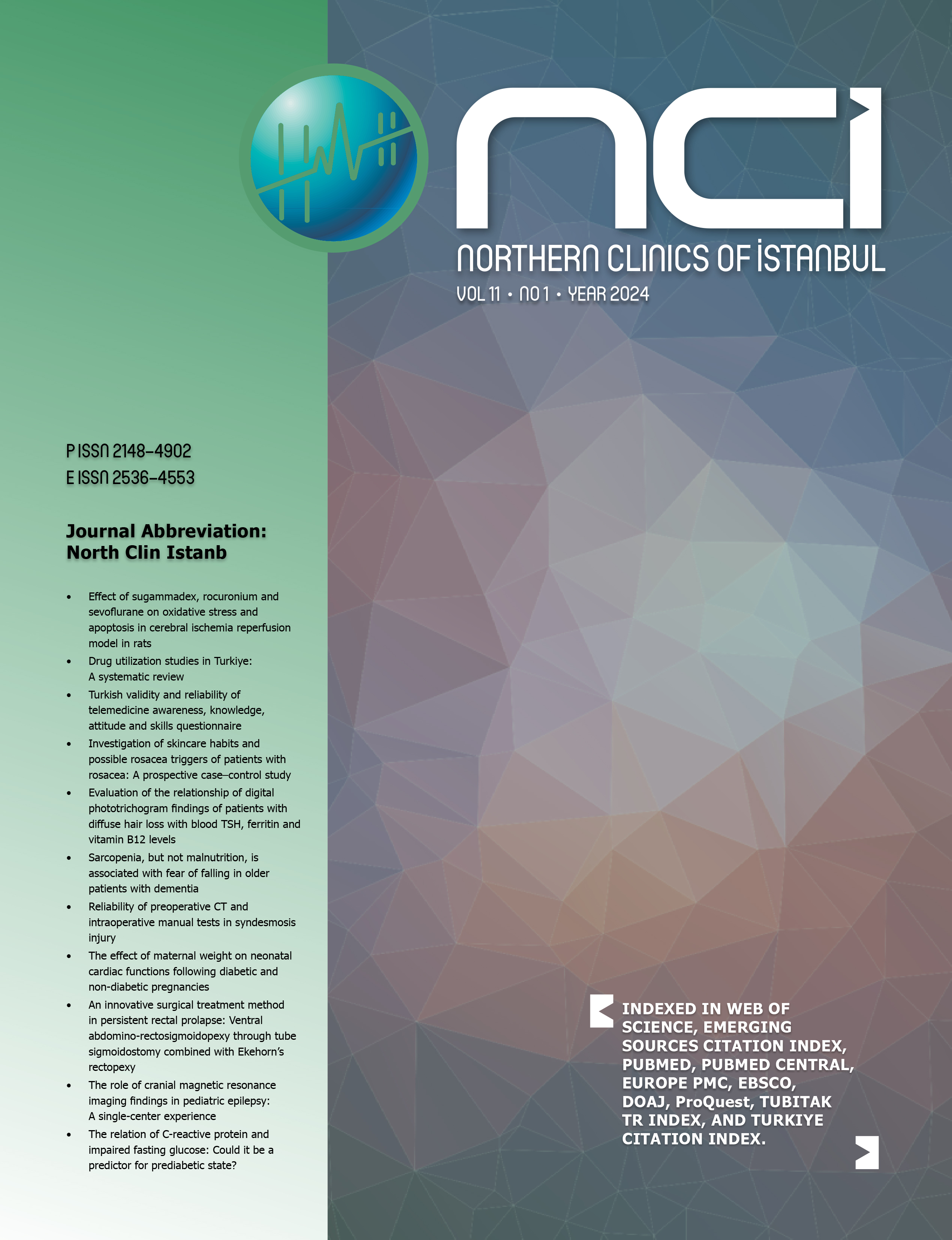Lipid profile, atherogenic indices, and their relationship with epicardial fat thickness and carotid intimamedia thickness in celiac disease
Zuhal Çalışkan1, Kenan Demircioglu2, Süleyman Sayar1, Resul Kahraman1, Ozge Caklili2, Fatma Betül Özcan2, Osman Köstek3, Omer Faruk Baycan2, Hamdi Levent Doganay1, Mustafa Caliskan21Department of Gastoenterology, Saglik Bilimleri University, Umraniye Training and Reaserch Hospital, Istanbul, Turkey2Department of Cardiology and Internal Medicine, Istanbul Medeniyet University, Goztepe Training and Reaserch Hospital, Istanbul, Turkey
3Department of Oncology, Trakya University, Edirne, Turkey
INTRODUCTION: Aim: In this study we aimed to investigate presence of subclinical atherosclerosis with measuring epicardial fat thickness (EFT) and carotid intima media thickness (c-IMT), to evaluate low level inflammation with hsCRP and to evaluate whether there is a relationship between lipid profile, atherogenic indices and hsCRP with these subclinical atherosclerosis markers in patients with celiac disease (CD).
METHODS: After exclusion and inclusion criteria were applied, 31 patients with CD (24 female, mean age: 39.4±12.3 years) and 32 healthy controls (21 female, mean age: 39.5±4.4 years), totally 63 cases, were recruited. Subclinical atherosclerosis was evaluated with EFT by transthoracic echocardiography and cIMT by ultrasonography. Inflammatory markers including erythrocyte sedimentation rate (ESR), hsCRP, and lipid profile were recorded. Also, atherogenic indices were calculated: Castelli risk index I and II (TG/HDL-c and LDL-c/HDL-c, respectively), atherogenic index of plasma (AIP; logarithm TG/HDL-c), non-HDL-c (TG-HDL-c), and atherogenic coefficient (AC; non-HDL-c/HDL-c).
RESULTS: EFT was significantly higher in the CD group (0.49±0.10 vs. 0.49±0.09; p-value: 0.02). Although cIMT was higher in the patient group, it did not reach statistical significance (0.51±0.08, 0.47±0.08; p-value: 0.10). HDL cholesterol level was found to be significantly lower (42.0±8.8 vs. 50.0±13.7; p-value: 0.01), and the plasma atherogenic index was found to be significantly higher in the patient group (0.98±0.50 vs. 0.62±0.64; p-value: 0.02). hsCRP (3.51±3.18 vs. 1.92±1.40; p-value: 0.02) and ESR (17.2±12.8 with 9.7±3.1; p-value: 0.01) were found to be significantly higher in the CD group. Although there was a significant positive correlation between EFT and hsCRP (r: 0.453; p-value: 0.01), there was a significant negative correlation between cIMT and HDL-cholesterol (−0.339; p-value: 0.05), and a significant positive correlation with the other components of the atherogenic index was found.
DISCUSSION AND CONCLUSION: The risk of atherosclerosis has been increased in patients with CD. Chronic inflammation may be responsible for this increase along with atherogenic indices.
Manuscript Language: English





















